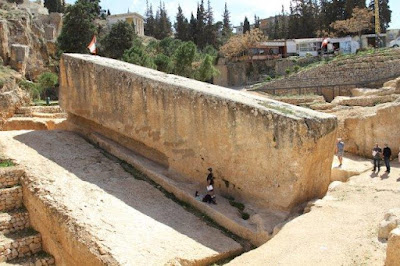Baalbek is an ancient city located in the Bekaa Valley of Lebanon. It is home to some of the most remarkable ruins in the world, including the Temple of Jupiter, the Temple of Bacchus, and the Temple of Venus. The site is renowned for its enormous stone blocks, some of which weigh more than 1,000 tons, and for the precision with which they were cut and placed. The following article will delve into the fascinating history of Baalbek, explore the engineering and architectural marvels of the ruins, and examine the various theories surrounding their construction.
Baalbek has a rich history that stretches back thousands of years. The city was originally known as Heliopolis, or the "city of the sun," and was a center of worship for the god Baal. It was later conquered by Alexander the Great in 334 BC and became part of the Seleucid Empire. The Romans then took control of the city in 64 BC and made it one of the most important religious centers in the empire.
The ruins of Baalbek are remarkable for their sheer size and scale. The most impressive structures are the Temple of Jupiter and the Temple of Bacchus. The Temple of Jupiter is believed to have been built in the 1st century AD and was one of the largest temples in the Roman Empire. The temple's podium, or base, is made up of three layers of massive stone blocks, the largest of which weighs an estimated 1,200 tons. The temple's columns are also massive, with some measuring more than 19 meters in height.
The Temple of Bacchus is another impressive structure, built in the 2nd century AD. It is smaller than the Temple of Jupiter but is notable for its elaborate decoration and intricate carvings. The temple is also made up of huge stone blocks, some of which weigh more than 300 tons.
One of the most impressive engineering feats of Baalbek is the Trilithon, a set of three enormous stone blocks that form part of the Temple of Jupiter's podium. The largest of these blocks, known as the Stone of the Pregnant Woman, is estimated to weigh around 1,000 tons, making it one of the largest single stones ever quarried. It is so named because of a legend that says that any woman who touches it will become pregnant.
The construction of such massive stone structures was an incredible achievement, and it is still not clear how the ancient builders were able to move and lift such enormous stones. Some theories suggest the use of ramps, pulleys, and levers, while others speculate that the builders had access to lost technologies, such as anti-gravity devices or even extraterrestrial assistance.
The enormous size and precision of the stone blocks at Baalbek have led to numerous theories and speculation about their origin and purpose. Some have suggested that the stones were quarried and moved by slaves, while others believe that they were transported using advanced technologies that have been lost to time. Some even suggest that the stones were cut and placed by extraterrestrial beings.
One of the most intriguing theories about Baalbek is that the site was actually constructed by an ancient civilization that predates the Romans and even the Egyptians. Some have pointed to the precision of the stone-cutting techniques as evidence that the builders possessed advanced knowledge of engineering and mathematics that was not present in the ancient world.
In conclusion, Baalbek is a remarkable ancient site that has fascinated people for centuries. The enormous stone blocks used in its construction continue to amaze and intrigue researchers, and the site remains an important destination for those interested in ancient history and architecture. While many theories have been proposed about the origins and purpose of Baalbek, much remains unknown about this enigmatic site. As researchers continue to study the ruins and unearth new discoveries, we may one day have a clearer picture of the true nature of Baalbek and the ancient civilization that built it.
Articles you might like:



No comments:
Post a Comment